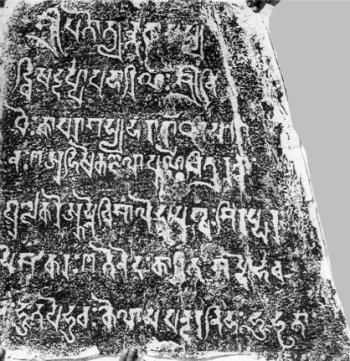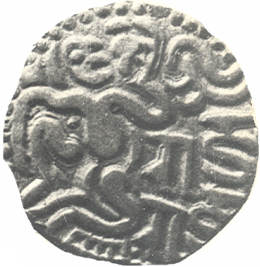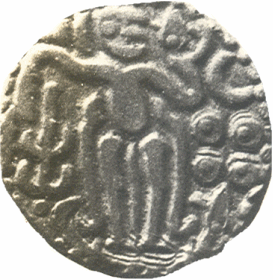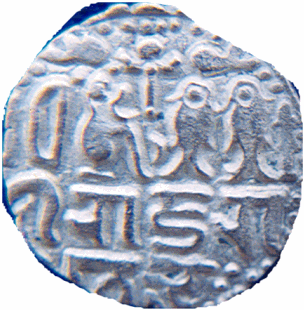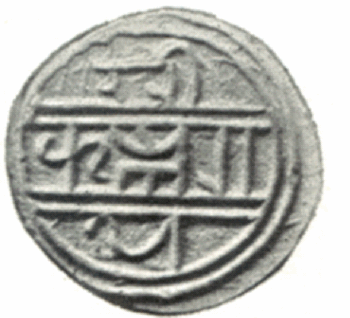Inscriptions in Nagari Script
The name of the script “Nagari” is supposed to be derived from “Nagara” a title of Pataliputra (Patna), the present capital of Bihar. But it might have been devised by the merchant community or “Nagarakas” and attained this name, due to its association with them. Nandi Nagari and Deva Nagari are two types of the Nagari script.
Nandi Nagari script was used to write Sanskrit language, and most of the Sanskrit copper plate inscriptions of the Vijayanagar period are written in that script.
Saluvankuppam and Kailasanatha temple inscription of Rajasimha Pallava are the earliest examples of the inscriptions engraved in the Nagari script in Tamil Nadu. The earliest Nagari charters in Tamil Nadu are the Paliyam copper plate inscriptions of the Ay king.
Rajaraja’s (985-1012 CE) Coin with legend in Nagari Script, in reverse.
Saluvankuppam and Kailasanatha temple inscription of Rajasimha Pallava are the earliest examples of the inscriptions engraved in the Nagari script in Tamil Nadu. The earliest Nagari charters in Tamil Nadu are the Paliyam copper plate inscriptions of the Ay king Varagunan (9 thcentury CE).
The coins of the later Chola kings, especially Rajaraja I and Rajendra I also, contain legends in the Nagari script. Many coins of the Vijayanagara and Nayak kings of Thanjavur contain legends in the Nagari script. Entire history of the Bhonsle kings of Thanjavur has been engraved, at the instance of Serfoji II, (1798-1837) the Maratha king of Thanjavur, on the walls of the Big Temple (Brahadhiswara temple) in the Nagari script.

